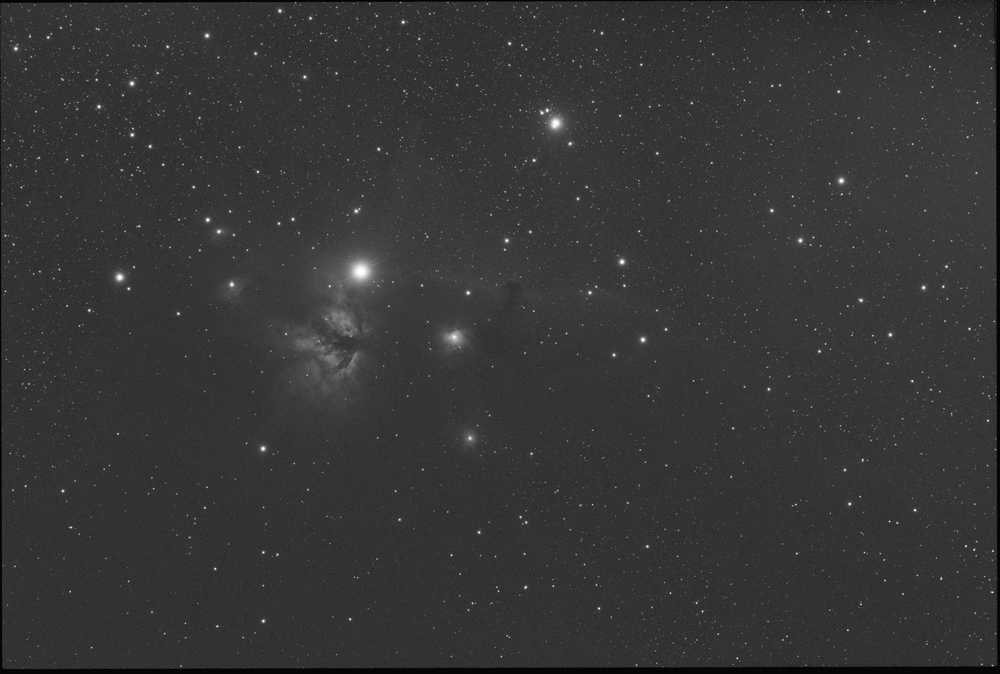© 2024 Michael A. Siniscalchi
B33 & NGC 2024
Emission & Reflection Nebula Complex in Orion
RA 05h 41m 38s Dec: -02 24' 48" Distance ~1300 ly
Wikipedia-
The Horsehead Nebula (also known as Barnard 33 or B33) is a small dark nebula in the constellation Orion. The nebula is located just to the south of Alnitak, the easternmost star of Orion's Belt, and is part of the much larger Orion molecular cloud complex. It appears within the southern region of the dense dust cloud known as Lynds 1630, along the edge of the much larger, active star-forming H II region called IC 434.
The Horsehead Nebula is approximately 422 parsecs or 1,375 light-years from Earth. It is one of the most identifiable nebulae because of its resemblance to a horse's head.
The Flame Nebula, designated as NGC 2024 and Sh2-277, is an emission nebula in the constellation Orion. It is about 1350 light-years away. At that distance, the Flame Nebula lies within the Orion B cloud of the larger Orion Molecular Cloud Complex. The bright star Alnitak, the easternmost star in the Belt of Orion, appears very close to the Flame Nebula in the sky. But the star and nebula are not physically associated with one another. The Flame Nebula contains a young cluster of stars which includes at least one hot, luminous O-type star labeled IRS 2b. The dense gas and dust in the foreground of the nebula heavily
The dark cloud of dust and gas is a region in the Orion molecular cloud complex, where star formation is taking place. It is located in the constellation of Orion, which is prominent in the winter evening sky in the Northern Hemisphere and the summer evening sky in the Southern Hemisphere. Colour images reveal a red colour that originates from ionised hydrogen gas (Ha) predominantly behind the nebula, and caused by the nearby bright star Sigma Orionis. Magnetic fields channel the gases, leaving the nebula into streams, shown as foreground streaks against the background glow. A glowing strip of hydrogen gas marks the edge of the enormous cloud, and the densities of nearby stars are noticeably different on either side.
Heavy concentrations of dust in the Horsehead Nebula region and neighbouring Orion Nebula are localized into interstellar clouds, resulting in alternating sections of nearly complete opacity and transparency. The darkness of the Horsehead is caused mostly by thick dust blocking the light of stars behind it. The lower part of the Horsehead's neck casts a shadow to the left. The visible dark nebula emerging from the gaseous complex is an active site of the formation of "low-mass" stars. Bright spots in the Horsehead Nebula's base are young stars just in the process of forming.
Click on image for full size
Click on image for medium size
Click here for the full size
The luminance channel is primarily hydrogen data to reveal the dust structure. Green and blue filters were were used to capture star colors. The stars in the Ha panel were added to the Green and Blue star data for a final RGB starfield.
Initial stretch of 2 hours in Hydrogen Alpha (Ha)
Initial stretch of 1 hour in Green
Initial stretch of 1 hour in Blue



